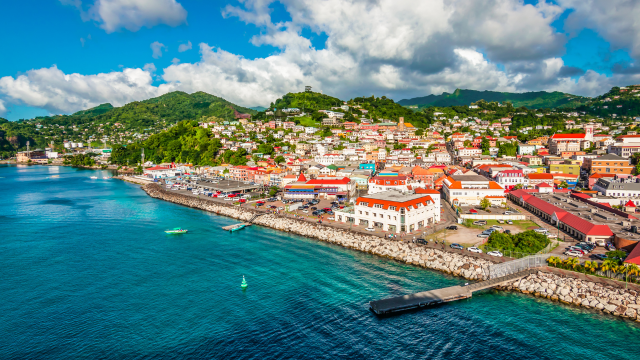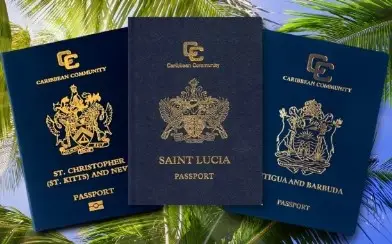Table of Contents
Ultimate Guide: Where Is Grenada? Everything You Need to Know About the Island Nation
Where is Grenada? This small Caribbean nation has long captured the curiosity of travelers and geography enthusiasts alike. Known as the “Island of Spice”, Grenada boasts breathtaking landscapes, vibrant culture, and a rich history. But where is Grenada situated on the map? This guide delves into its exact location, geographical features, history, population, and everything else you need to know.
If you’ve been wondering where is Grenada located or where is the country Grenada?, read on for an in-depth exploration of this Caribbean gem.
1. Where Is Grenada Situated? A Geographical Overview
Grenada is a sovereign island country located in the southeastern Caribbean Sea. It forms part of the Lesser Antilles, a group of islands in the West Indies.
Key Location Details
- Latitude and Longitude: Grenada lies at 12°N latitude and 61°W longitude, placing it close to the equator.
- Neighboring Countries:
- North: St. Vincent and the Grenadines.
- South: Trinidad and Tobago.
- West: The Caribbean Sea.
- East: The Atlantic Ocean.
Map Placement
Grenada is easy to spot on the Caribbean map due to its distinctive position at the southern end of the Windward Islands. Its location makes it a natural gateway between the Caribbean and South America.

2. The Composition of Grenada: Islands and Territories
The country of Grenada consists of three main islands:
- Grenada (the largest and most populous).
- Carriacou.
- Petite Martinique.
In addition, there are smaller islets that add to the charm of the nation. Each island has its unique features, making Grenada a fascinating place to explore.
Capital City
The capital of Grenada, St. George’s, is a bustling town famous for its horseshoe-shaped harbor, colonial architecture, and vibrant marketplaces.

3. Where Is Grenada Located Historically? A Journey Through Time
Grenada’s history is as rich as its natural beauty. Understanding its past helps explain its strategic importance and cultural diversity today.
3.1 Pre-Colonial Era
Before European colonization, Grenada was inhabited by the Arawaks and later the Caribs, Indigenous peoples who thrived on the island’s natural resources.
3.2 European Colonization
- 1498: Christopher Columbus discovered Grenada, naming it “Concepción.” However, the name Grenada was adopted by Spanish sailors, likely after Granada, Spain.
- 1649: The French colonized Grenada, establishing plantations and introducing African slaves.
- 1763: Grenada was ceded to the British under the Treaty of Paris, marking a shift in colonial power.
3.3 Independence
Grenada achieved independence from Britain in 1974, becoming a member of the Commonwealth of Nations.

4. Grenada’s Population and Demographics
4.1 Population Size
Grenada’s population stands at approximately 113,000, making it one of the smaller countries in the Caribbean by population size.
4.2 Ethnic Composition
The majority of Grenada’s residents are of African descent, with smaller communities of Indian, European, and mixed heritage.
4.3 Language
The official language is English, but Grenadian Creole English and Grenadian Creole French are widely spoken.
4.4 Religion
Christianity is the predominant religion, with Roman Catholics and Anglicans being the largest denominations.
5. Climate and Natural Beauty of Grenada
Grenada boasts a tropical climate with warm temperatures year-round. The island experiences two main seasons:
- Dry Season: January to May.
- Wet Season: June to December.
Natural Attractions
- Grand Anse Beach: One of the most famous beaches in the Caribbean.
- Levera National Park: Home to exotic wildlife and breathtaking views.
- Underwater Sculpture Park: A unique diving experience showcasing marine life and art.

6. Why Is Grenada Famous?
Grenada’s fame extends far beyond its natural beauty.
6.1 Spice Production
Known as the “Island of Spice,” Grenada is a leading global exporter of nutmeg, cloves, and cinnamon.
6.2 Tourism
With its stunning beaches, vibrant festivals, and historic sites, Grenada attracts tourists from around the globe.
6.3 Sports and Culture
Cricket is a national passion, and events like Spicemas Carnival showcase the island’s vibrant culture.
7. How to Travel to Grenada
7.1 By Air
Maurice Bishop International Airport (GND) offers direct flights from major cities in the U.S., Canada, and Europe.
7.2 By Sea
Grenada’s ports welcome cruise ships, making it accessible for day-trippers.
7.3 Getting Around
Local minibuses, taxis, and car rentals are popular options for exploring the island.
8. The Cultural Identity of Grenada
Grenada’s culture is a blend of African, French, and British influences. This fusion is evident in its music, dance, and cuisine.
8.1 Music and Festivals
- Calypso and Soca: Popular genres during the annual Spicemas Carnival.
- Steelpan Music: A hallmark of Grenadian celebrations.
8.2 Cuisine
Grenada’s food reflects its spice heritage. Dishes like oil down, the national dish, combine flavors unique to the island.

9. Frequently Asked Questions About Where Is Grenada
Q1. Where is Grenada situated geographically?
Grenada is located in the southeastern Caribbean, part of the Lesser Antilles, near Trinidad and Tobago.
Q2. What is the population of Grenada?
Grenada has a population of approximately 113,000 people.
Q3. Where is Grenada located on the map?
Grenada is at 12°N latitude and 61°W longitude, south of Saint Vincent and the Grenadines.
Q4. Why is Grenada called the “Island of Spice”?
Grenada produces large quantities of nutmeg, cinnamon, and cloves, earning it the nickname.
Q5. Is Grenada a good place to visit?
Yes, with its stunning beaches, rich history, and vibrant culture, Grenada is a top destination for travelers.
10. Conclusion: Why Knowing Where Grenada Is Matters
Understanding where Grenada is located helps reveal the island’s charm, from its rich cultural heritage to its global importance as a spice producer. Whether you’re a traveler, a history enthusiast, or just curious, Grenada is a place worth knowing—and visiting.
Let Grenada inspire your next adventure!



